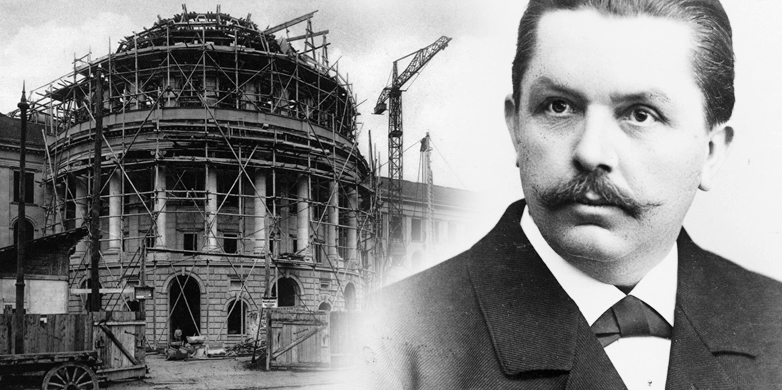A biography in honour of an ETH pioneer
Friday was the day of the launch event for a new book about Robert Gnehm. The occasion was organised by the ETH-Bibliothek and the Association of Swiss Pioneers of Industry and Technology.
He became a professor at ETH Zurich at the tender age of 24, played an essential role in modernising and developing ETH, forged links between it and industry and was the man who brought Albert Einstein to our university: there is only one person this could be – Robert Gnehm (1852-1926).
A bust of Gnehm stands proudly in front of the entrance to the Semper Aula auditorium in the Main Building, yet few people really know who he was. In fact, this former chemistry professor and President of the Swiss School Board is an important figure in the history of ETH Zurich. His life has now been chronicled for the first time in a biography, which is being published as part of the external page“Swiss Pioneers of Industry and Technology”call_made series. The book was unveiled on Friday at a launch event in the LEE building – a fitting venue, as Bernhard Ruetz, the editor of the book series, pointed out in his introductory speech: “Robert Gnehm is synonymous with the physical expansion of ETH Zurich and the LEE is the university’s newest building.”
A board member at Ciba
In the book – which goes by the title “Robert Gnehm: Brückenbauer zwischen Hochschule und Industrie” (“Robert Gnehm: building bridges between university and industry”) – the author Adrian Knoepfli describes how Gnehm became a key figure in fostering relations between ETH Zurich and the world of industry. In his efforts to forge links between the university and the chemical industry in particular, he made history in Basel and paved the way for an indispensable transfer of knowledge between scientific research and practice.
In his youth, Gnehm left ETH Zurich to pursue a career in industry, working his way up to prominent positions at companies such as Ciba and Sandoz before returning to the university. “As a director, a board member, a professor and a key player in higher education policy, he was instrumental in transforming a fledgling chemical industry which was still finding its feet into a strong and sustainable industrial sector,” said Tobias Straumann, an economic historian from the University of Zurich.
Both the book itself and the presentations at the launch event were illustrated with an array of historical photographs from the ETH Zurich University Archives in the ETH-Bibliothek. These depict highlights such as the construction of the cupola, the shell of which was completed in 1918, and Albert Einstein’s response to his appointment by Robert Gnehm. His delight is summed up in a single word he wrote in a letter at the time: “Hallelujah!”

